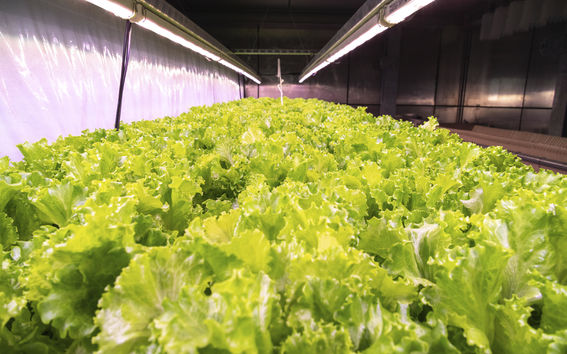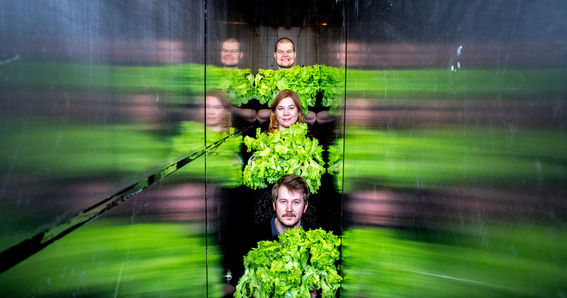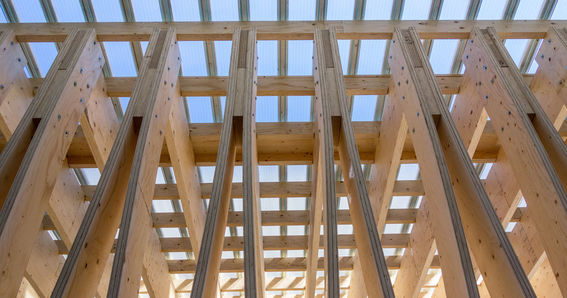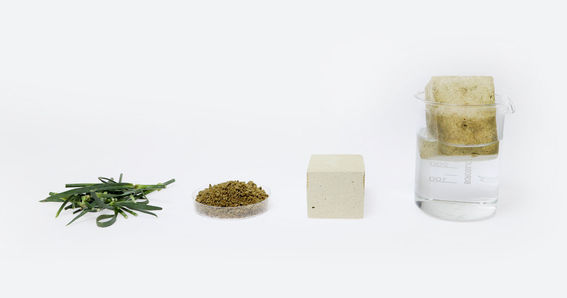We could feed ten billion people – research offers paths past the climate crisis
In this series of blog posts, Aalto experts share their views on the climate crisis ahead of the UN's COP26 climate summit held in November 2021.

Carbon emissions often dominate discussions about our environment, but feeding our growing population creates broader environmental problems that must also be addressed. Researchers have developed innovative solutions to meet this challenge through sustainable and environmentally sound food production.
‘Food production is the most significant activity reshaping our planet,’ says Matti Kummu, a professor of global water and food issues. ‘More than a third of the global land area is used to produce food, and irrigation accounts for 70–90 percent of our water use. The effects of climate change will put more strain on this already unsustainable system,’ he explains. In fact, research from his group shows this will cause a 30-40% decline in agricultural productivity around the Mediterranean, North America, and South Asia.
His team used state-of-the-art models to study how the global food production system could be improved as we grapple with the consequences of climate change. Their analysis showed that our food supply could be doubled without using more resources if the right changes are made. Some countries can benefit by improving their use water and nutrients more effectively to realize the potential of their arable land, but wealthy countries will have to shift to diets with a lower environmental impact and resource demand – by consuming less meat, for example.
Together with international collaborators, Kummu’s team also explored ways to reduce food production’s resource use from the current, unsustainable levels. According to their calculations, the current food production system can only feed three billion people while respecting sustainable global boundaries in terms of biodiversity maintenance and the use of nitrogen, land, and water. Promisingly, their study also demonstrated that adjusting where and how we produce food could boost the system’s capacity to ten billion people while staying within our planet’s limits.
‘However, this would require large transformations in all aspects of food production, including where and how we grow the food and changes towards more plant-based diets,’ says Kummu.
One way to boost food production is with mostly wooden greenhouses of the sort developed by Pasi Herranen at Aalto University. The prototype consumed half as much energy and 95% less water than traditional greenhouses used for year-round cultivation in Finland. By using a completely enclosed structure built of vacuum-dryable birch plywood elements, the design provides extremely efficient insulation. ‘We should produce more nutritionally valuable plants in urban environments,’ says Herranen, noting that this could create the opportunity to reforest fields that are currently used for cultivation.
The plants use only a fraction of the energy from LED lights to grow, turning the rest into thermal energy. The design is so efficient that this not only keeps the greenhouse warm enough for the plants but also produces extra heat which can be fed into the district heating network. The greenhouse also captures moisture released by the plants and reuses it for irrigation, minimising water loss.
The efficiency of this mostly wooden greenhouse makes it an ideal choice for vertical farming, an effective approach for reducing the use of land and resources in food production. Following the success of the prototype, a larger scale test greenhouse is planned for the Aalto University campus in Otaniemi.
‘Vertical farms should be integrated into the infrastructures of smart cities so that we can make use of circular economics and save energy and money in crop production,’ says Herranen. ‘The systems should be as environmentally friendly as possible, meaning that the development of more sustainable construction solutions matters.’
Anything but an ordinary greenhouse | Aalto University
A wood-structured windowless greenhouse consumes only half as much energy as a traditional glass greenhouse. In addition to producing food, Pasi Herranen’s invention could generate electricity and excess heat in the future.
Visit (www.aalto.fi)
Aalto University experts available to comment on the following topics:
Global food production
Matti Kummu studies the interactions between human populations and the use of natural resources. His work concentrates on global food systems and opportunities for easing the pressure on the environment and climate while providing an adequate food supply for everyone.
matti.kummu@aalto.fi
p. +358504075171
Wooden greenhouse
Pasi Herranen is a doctoral candidate in the department of bioproducts and biosystems. His work on innovative uses of wood as a construction material led to the development of the Vacuum Insulation System, which uses vacuum technology to engineer wood to survive high humidity environments. This research has led him to become a system-level designer of a novel vertical farming system.
pasi.herranen@aalto.fi
Advancing climate actions in the places we live: Designing cities to store carbon | Aalto Blogs
Simple changes in urban planning can reduce carbon emissions and increase carbon storage, offering tools to help meet emissions targets.
Visit
Delivering the practical solutions needed to adapt to climate impacts – Bio-based materials could move us beyond plastic | Aalto Blogs
By processing lignin, cellulose, and other plant matter into new bio-materials, research is opening paths to sustainable alternatives.
Visit
Accelerating the global energy transition: Clean energy demands socially just policies | Aalto Blogs
Policy, technology, and practice must be aligned to accomplish the shift to clean energy, say Aalto's experts.
Visit
Show other posts from this blog

Why can’t companies and governments meet sustainability goals – and what can be done?
Antiquated business models and ambiguous policies hinder efforts towards sustainable development.
Advancing climate actions in the places we live: Designing cities to store carbon
Simple changes in urban planning can reduce carbon emissions and increase carbon storage, offering tools to help meet emissions targets.
Delivering the practical solutions needed to adapt to climate impacts – Bio-based materials could move us beyond plastic
By processing lignin, cellulose, and other plant matter into new bio-materials, research is opening paths to sustainable alternatives.